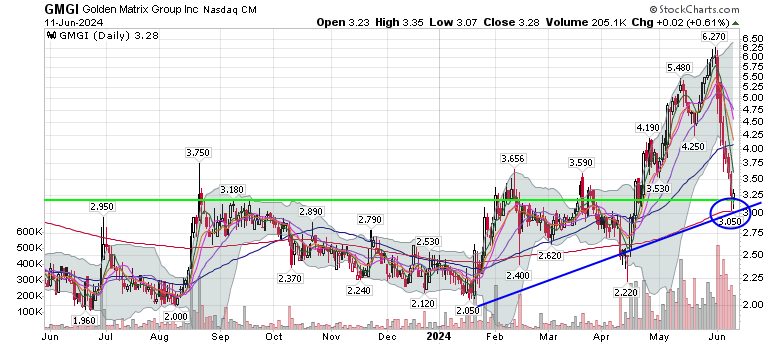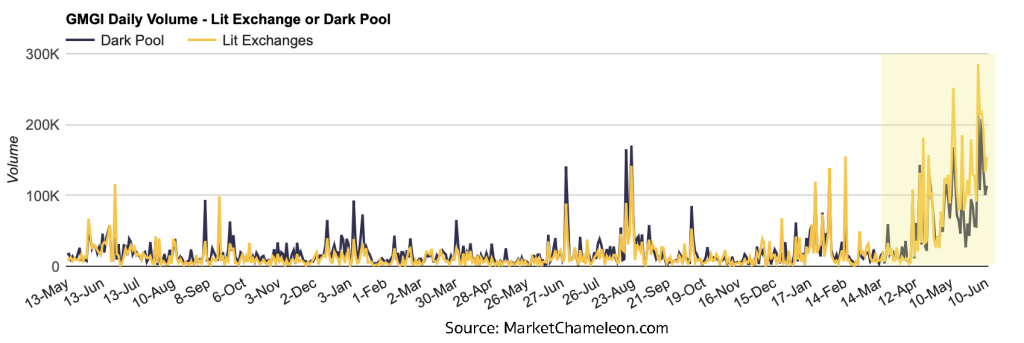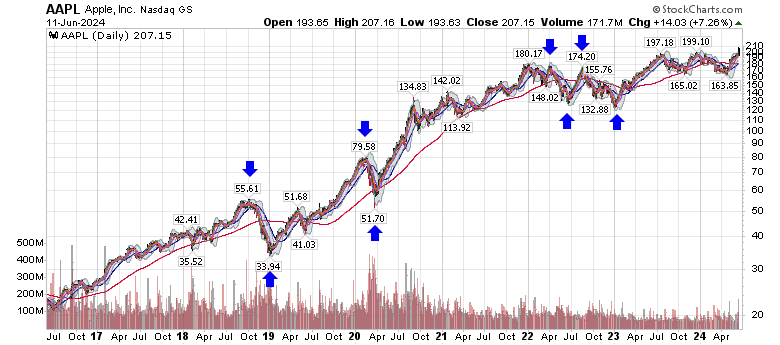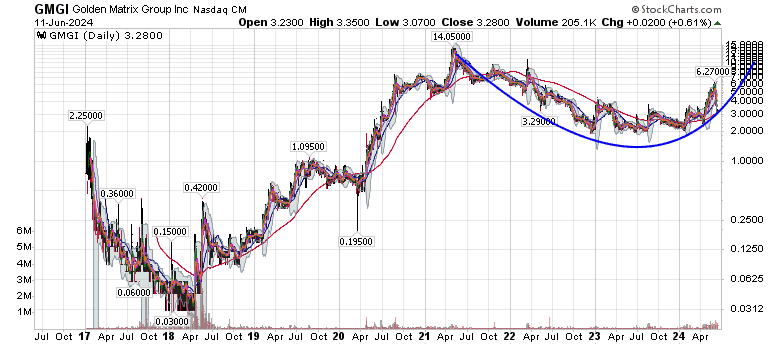No matter how much most of us would like them too, stocks can’t go straight up forever.
Social media has become a breeding ground for retail investor sentiment, and with it comes a fair share of emotional outbursts. When a stock price dips after a significant run-up, accusations of short selling and dark pool activity are common. That said, it’s crucial to consider a simpler explanation: a healthy pullback.
Imagine this: You buy a stock at $10, and within a month, it skyrockets to $20. Then the stock price dips to $18. Panic sets in, and social media chatter gets louder about potential causes.
Next thing you know, shares are at $14. It’s not the end of the world.
In fact, a pullback after a strong surge is a natural market phenomenon. Here are three reasons why pullbacks happen.
- Profit-taking: Those who bought early at lower prices might see this as an opportunity to cash in some profits, leading to a temporary dip in share price.
- Valuation Reset: Rapid price increases can sometimes outpace the company’s actual fundamentals. Wall Street generally prefers a slow-and-steady share appreciation as the company continues to strengthen.
- Normal Market Fluctuation: The stock market doesn’t move in a straight line. Pullbacks are a normal part of the market cycle, and a healthy correction can actually be a good thing for a stock’s long-term health.
Note that none are anything nefarious. So, before you join the online chorus of conspiracy theories, take a deep breath and consider these facts:
- Short sellers are a legitimate part of the market, providing liquidity and potentially identifying overvalued stocks. Their presence doesn’t automatically mean a stock is doomed.
- Dark pools exist to facilitate large institutional trades without causing market disruptions. Suspect sometimes, but they’re not inherently negative.
- Pullbacks create buying opportunities
GMGI: Case in Point
Golden Matrix Group (NASDAQ: GMGI) is a leading B2B and B2C gaming technology company utilizing proprietary technology and operating globally across 17 regulated markets. GMGI’s B2B division develops and licenses branded gaming platforms for its extensive list of clients. RKings, its B2C division, operates a high-volume eCommerce site enabling end users to enter paid-for competitions on its proprietary platform in authorized markets.
In Mexico, GMGI owns and operates MEXPLAY, a regulated online casino. The company’s global footprint expanded earlier this year with the acquisition of Meridianbet, a well-established B2B and B2C sports betting and gaming platform operating in regulated markets across Europe, Africa and Latin America.
The Meridianbet acquisition has been a catalyst for GMGI’s books and stock price. As detailed in a Form 8-K/A filed with the SEC, in fiscal year 2023, the combined entity achieved total pro forma sales of $137.17 millionand a gross margin of 57%. For the first quarter of 2024, total combined revenue was $36.69 million, with combined gross margin of 57.4%. Combined net income of for Q1 2024 was $2.06 million.
GMGI Chart Responds
The positive developments were on full display in the GMGI chart as to the positive market response. Notice the pronounced surge in cumulative volume as shares bounced off $2.22 on April 15 to hit a 52-week high at $6.27 on May 31 (+182.4% in six weeks).

Not surprisingly, a sell-off ensued. But was it driven by something greater than natural trading? A look at GMGI dark pool trading on MarketChameleon.com shows no discernible jump in dark pool versus lit trading over the last couple months.

As it happens, dark pool trading is a playground for big money (e.g. hedge funds, institutions). Market Chameleon’s charts show that nearly all trading for GMGI is small and retail traders. This may soon change, as Golden Matrix Group was just added to the Russell 3000 on June 5, which could command the attention of a lot more funds that invest in the popular index.
Then, it must be shorts, right? No. Data on Fintel.io, which pulls its data from NASDAQ, shows GMGI as just 96,868 shares, or less than a day’s worth of trading, short.
The short answer is that people took the chance to bank some profits as GMGI hit a multi-year high. It happens to every company. Even the mighty Apple (NASDAQ: AAPL) has been chopped substantially during its incredible value creation (and halved many times when you go back to its early years).

Savvy traders use moves up and down to review investment theses, asking if the company’s fundamentals still support the initial investment decision and if the pullback is a chance for dollar-cost averaging.
Focus on the long term: Don’t get caught up in short-term price fluctuations. If you believe in the company’s long-term prospects, a pullback can be a golden opportunity to buy at a discount.
For GMGI, a better question than what was the culprit in the pullback may be if the chart is forming a large cup and handle, a bullish continuation pattern. Technical traders surely noticed in the chart above that shares rebounded off a support level and the 200 day moving average. This is making a third new higher low if it holds.
A smooth climb from here to keep making higher lows and higher highs is what builds a strong chart and reflection of a stock worthy of being part of the Russell 3000.

Successful investing requires discipline and a clear head, not being swayed by noise. Analyze the situation rationally, and remember, sometimes a pullback is just a pullback.
This content is provided by J Ramsdell Consulting (“JRC”), an investor relations consultancy firm specialized in social media management and corporate communications solutions for public and private companies globally. JRC is not a registered broker/dealer or financial advisor and encourages all readers to consult with a qualified professional advisor before making any investment decisions. JRC assumes no responsibility for the investment actions executed by the reader. All content is generated from publicly available information and believed to be accurate. However, the accuracy or completeness of the information is only as reliable as the sources they were obtained from. All materials created by JRC and released to the public via distribution services, social media, website, or any other means of transmission are not to be regarded as investment advice or a solicitation to buy or sell securities and are exclusively for informative purposes only. JRC has been compensated by GMGI for investor relations services, including occasionally creating and managing content, which inherently creates a conflict of interest in JRC’s ability to remain objective in communication regarding the client company. Furthermore, this article contains forward-looking statements, particularly as related to the business plans of the client company, within the meaning of Section 27A of the Securities Act of 1933 and Sections 21E of the Securities Exchange Act of 1934 and are subject to the safe harbor created by these sections.

